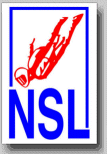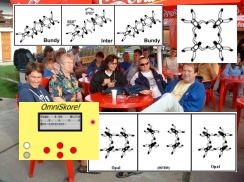
National
Skydiving
League
226 Pecan Street
Deland FL 32724
tel: (386) 801-0804
© 2003 - 2024
All Rights Reserved


226 Pecan Street
Deland FL 32724
tel: (386) 801-0804
© 2003 - 2024
All Rights Reserved


The topics of these stories were the more significant ones that came with the recent rule changes. However, all IPC decisions have not been covered yet. There are other interesting changes and additions, which are important enought for each competitor to keep them in mind. This is also the right time to download the complete set of rules, print it out and study it once in a while. One set of copies should be stored in each competitor's gear bag...
Following is a complete overview of all recent rule changes and additions, not including the actual dive pool changes. It is difficult to detect these changes within the whole set of rules without comparing the old and the new version word by word. However, Fiona McEachern, Chair of the IPC Formation Skydiving Committee, provided the NSL News and other outlets with a selected overview of only the parts in the rule book, which included changes or additions.
The new and current language of the IPC rules is shown in the grey tables. The changes and/or additions are underlined and bold in italic font. The text in the yellow table is not a part of the rules. It only briefly explains the character or the background of the rule change or addition.
| 2.6 A subgroup’s centerpoint: is one of the following: 1) The defined grip, or the geometric centre of the defined grips within a subgroup within linked jumpers. 2) The geometric centre of an individual’s torso. |
| 2.6 is a clarification of the centrepoint definition. 1) has already been a part of the rules. 2) was added to the rules with the current updates. |
| 2.10 Scoring formation: is a formation which is correctly completed and clearly presented either as a random formation or within a block sequence as depicted in the dive pool, and which, apart from the first formation after exit, must be preceded by a correctly completed and clearly presented total separation or inter, as appropriate. |
| 2.10 only adds a requirement that has already been demanded by the judges anyway. However, the added definition "clearly presented" supports and leads into the new situation where former "NJ's" (non judgeable situation) and infringements are now being handled the same way. |
| 2.11 Infringement: is one of the following: 1) An incorrect or incomplete formation which is followed within working time by either · a total separation or, · an inter, whether correct or not. 2) A correctly completed formation preceded by an incorrect inter or incorrect total separation. 3) A formation, inter, or total separation not clearly presented. |
| 2.11 shows how the new definition "clearly presented" comes into play. The former definition of the "NJ" has been completely removed, and the former "NJ" has now become one of the three possible options for infringements. |
| 2.12 Omission is one of the following: 1) A formation or inter missing from the drawn sequence. 2) No clear intent to build the correct formation or inter is seen but another formation or inter is presented and there is an advantage to the team resulting from the substitution. |
| 2.12 adds a new definition of the omission to "a formation or inter". The missing "clear intent" shows that the judges will be much aware of the situation created by the newly decreased damage caused by an infringement. Teams could be tempted to manipulate the sequence in certain situations. The new definition of 2.12 makes sure that teams will follow the required sequence or face a toughened penalty. |
| 2.14 NV: Formations, inters, or total separations not visible on screen due to meteorological conditions, or factors relating to the Videographers equipment that can not be controlled. |
| 2.14 is a clarification of a video issue. The use of inappropriate lenses and other equipment of the team videographer can not be an NV (No Video). The "NV" offers a team a chance for a possible re-jump, and it is a part of the language for judges on the score sheet, which includes: / : stands for "Correct Scoring Formation" 0 : stands for "Infringement" X : stands for "Omission" NV: stands for "No Video Situation" //: stands for "End of Working Time" |
| 4.8.2 For each omission three points will be deducted. |
| The definition of the damage is located at the section of the "General Rules" (4) and "Scoring" (4.8). The damage for an omission has been increased from a two-point to a three-point deduction of the total. |
| 4.8.3 If an infringement in the scoring formation of a block sequence is carried into the inter (ref. 2.8), this will be considered as one infringement only, provided that the intent of the inter requirements for the next formation is clearly presented and no other infringement occurs in the inter. |
| 4.8.3 is identical with the previous definition of an infringement carried into the inter. The committee only added the new definition "clearly presented" to this rule. The former wording "and only one point will be deducted," of the same rule needed to be removed according to the new penalty rules. |
| 4.11 Rejudgement Competitors may request to have one of their own competition jumps rejudged. The request must be made in writing in English to the Chief Judge within 30 minutes of the score of the jump in question being posted and shall be accompanied by a rejudgement fee of US $100. Once a request for rejudgement has been received by the Chief Judge it may not be withdrawn and the rejudgement will take place. This rejudgement is only permitted once for each team during a competition. Rejudgements fees shall be retained by the IPC. |
| 4.11 is completely new in the "General Rules" section. The request for rejudgement has now come up often enough to find its way into the rule book. However, this new rule allows only a rejudgement one of the team's own jumps. A team cannot request for rejudgement of another team's jump. |
| 5.4 The Judges will watch the video evidence of each jump to a maximum of three times at normal speed. If, after the viewings are completed, and within fifteen seconds of the knowledge of the result, the Chief Judge, Event Judge or any Judge on the panel considers that an absolutely incorrect assessment has occurred, the Chief Judge or Event Judge will direct that only that part(s) of the jump in question be reviewed. If the review results in a unanimous decision by the Judges on the part(s) of the performance in question, the score for the jump will be adjusted accordingly. Only one review is permitted for each jump. |
| This addition to the previous 5.4 version makes sure that the judging procedure for one jump is not getting dragged out too long. It occurred in the past that critical portions of a jump were viewed several times. The requirement of an "unanimous decision" for a possible adjustment of a score remains unchanged. |
| 5.5 The Judges will use the electronic scoring system to record their evaluation of the performance. The judges may correct their evaluation record after the jump has been judged. Corrections to the evaluation record can only be made before the Chief Judge signs the score sheet. At the end of working time, freeze frame will be applied on each viewing, based on the timing taken from the first viewing only. |
| In the past, the judges used to push the start button again when more viewings were required. This could change the freeze frame at the end of the jump. The addition of ule 5.5 makes sure that each viewing will have the same freeze frame. |
| 5.6 A majority of Judges must agree in the evaluation in order to; · credit the scoring formation, or · assign an omission, or · determine an NV situation. |
| The next additions can be found in the following section of the IPC rules, "Judging". Rule 5.6 now also requires a majority in the judging panel for the "omission" and the "NV situation". |
| 5.7 If the Judges use a score sheet to record their evaluation, they will operate their own chronometer and they will use the signs below. In this case the score sheets of all judges must be collected immediately after the judges have scored the jump for evaluation by the scoring section. The results of the evaluation will be checked by at least one judge. Situation: • Correct scoring formation............................................................ /. • Infringement............................................................................... 0. • Omission....................................................................................X. • NV situation............................................................................NV. • End of Working Time................................................................. //. |
| 5.7 consequently makes the same necessary adjustments for the situation where the judges are using score sheets and shows the five different options for evaluation. |
| 6.3.6.4 Videographers must be entered for each team as part of the delegation. The evaluation process for the video evidence will be the same for any Videographer. Videographers may be one of the following: A) One of the team in which case they may only jump as a Videographer and they will be eligible to receive awards and medals, or B) Any other person. This Videographer is not eligible to receive awards and medals. In this case there may be no more than five (5) competitors in a 4-Way team and no more than nine (9) competitors in an 8-Way team. This Videographer may jump only as a Videographer and is subject to the same regulations as other competitors on the team. Option B is valid for 2005 and 2006 only. A Videographer may be replaced at any time during the competition, (with the agreement of the Meet Director) in which case the replacement Videographer will not be eligible for awards and medals. |
| 6.3.6.4 appears in the IPC section of "Rules Specific To The Competition". The updated definition does not bring any changes of the videographer's position in the delegation and the team. The IPC Committee will ask the IPC Plenary for direction in 2006. Any recommendation in 2006 will be implemented in 2007 if necessary. As in the past, the videographer can still be a foreigner or a person of any gender, even though the committee removed the previous option in 6.3.6.4 "regardless of gender". |